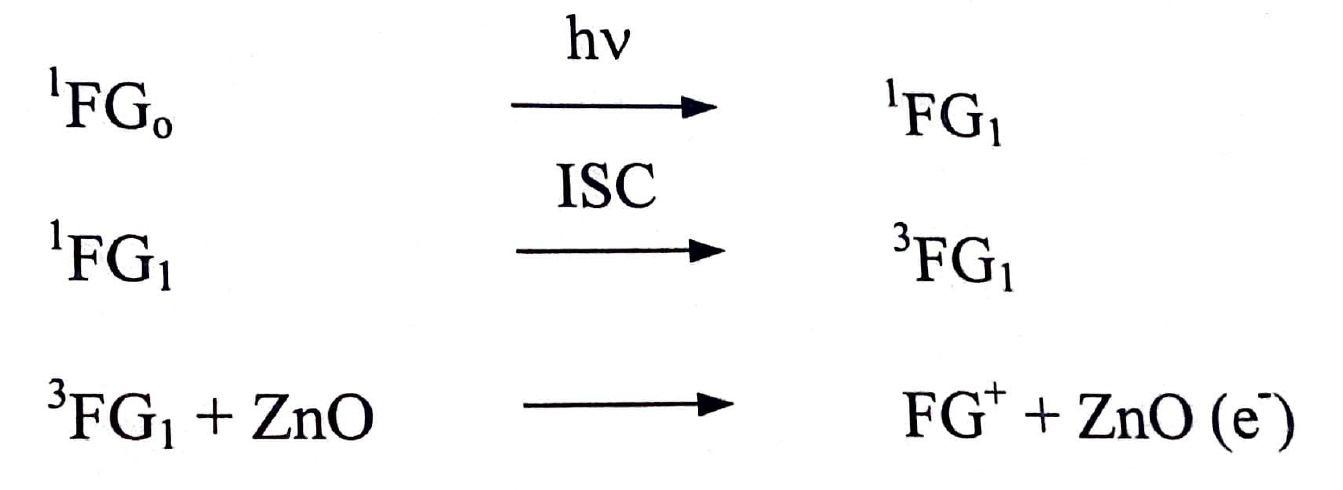
3 minute read
International Journal for Research in Applied Science & Engineering Technology (IJRASET)
ISSN: 2321-9653; IC Value: 45.98; SJ Impact Factor: 7.538
Volume 11 Issue IV Apr 2023- Available at www.ijraset.com
Advertisement
TABLE IV: EFFECT OF AMOUNT OF SEMICONDUCTOR [Fast
Fig. 4: Effect of amount of semiconductor
It has been observed that the rate constant of photobleaching of Fast Green (FCF) increases with an increase in the amount of semiconductor but ultimately, it becomes almost constant after a certain amount. This may be due to the fact that as the amount of semiconductor was increased, the exposed surface area also increases, but after a certain limit, if the amount of semiconductor was further increased, there will be no increase in the exposed surface area of the photocatalyst. It may be considered like a saturation point; above which, any increase in the amount of semiconductor has negligible or no effect on the rate of photocatalytic bleaching of Fast Green (FCF). Any increase in the amount of semiconductor after this saturation point will only increase the thickness of the layer at the bottom of the vessel, once the complete bottom of the reaction vessel is covered by the photocatalyst8 . It may be also confirmed on the basis of geometry of the reaction vessel. This was observed by taking reaction vessels of different dimensions. the point of saturation was shifted to higher value; when vessels of larger capacities were used. A reverse trend was observed when vessels of smaller capacities were used.
ISSN: 2321-9653; IC Value: 45.98; SJ Impact Factor: 7.538

Volume 11 Issue IV Apr 2023- Available at www.ijraset.com
E. Effect of Light Intensity
To observe the effect of intensity of light on the photocatalytic bleaching of Fast Green (FCF), light sources of different wattage were used or the distance between the light source and the exposed surface area was varied9. The intensity of light at each distance was measured by suryamapi (CEL Model SM 201). The results obtained are reported in Table V and graphically represented in Figure
TABLE V: EFFECT OF LIGHT INTENSITY
The result given in Table V indicates that bleaching action was accelerated as the intensity of light was increased because any increase in the light intensity will increase the number of photons striking per unit area of semiconductor powder. A linear behavior between light intensity and rate of reaction was observed.
ISSN: 2321-9653; IC Value: 45.98; SJ Impact Factor: 7.538
Volume 11 Issue IV Apr 2023- Available at www.ijraset.com
IV. MECHANISM


On the basis of these observations, a tentative mechanism for photocatalytic bleaching of Fast Green (FCF) may be proposed. ...(1.1) ...(1.2)
When the solution of Fast Green (FCF) was exposed to light, in presence of a semiconductor, initially the dye molecules are excited to first excited singlet state. Then these excited singlet molecules are transferred to triplet state through intersystem crossing (ISC). The triplet dye may donate its electron to the semiconductor and the Fast Green (FCF) becomes positively charged. The dissolved oxygen of solution will pull on electron from the conduction band of semiconductor; thus, regenerating semiconductor and O• 2 is formed. In acidic medium, oxygen ion radical reacts with proton to form HO• 2 radical. This radical reduces the positively charged Fast Green (FCF) molecules in leuco form (FGH) regenerating oxygen molecules. The participation of HO• 2 ion radical as an active species was confirmed by carrying out the reaction in presence of HO• 2, ion scavenger e.g. 2-propanol. Where the reaction rate was drastically retarded10
V. CONCLUSION
1) An optimum rate of photocatalytic bleaching of Fast Green (FCF) was observed at pH = 7
2) Optimum rate of photocatalytic bleaching was observed at concentration 1.0x10-5M
3) The rate constant of photobleaching of Fast Green (FCF) increases with an increase in the amount of semiconductor but it becomes almost constant after certain amount.
4) A linear behavior between light intensity and rate of photocatalytic bleaching was observed.
References
[1] K. Santhy P.Selvapathy “Removal of reactive dyes from wastewater by adsorption on coir pith activated Carbon”, Bioresour Technol, 97, pp. 1329-1336, 2006
[2] A. Atef El-Sayed, M. Salama, M. H. El-Rafie and Hossam, E. Emam, “Modified Rice Straw as a Template in Syntheses of Nano TiO2 Loaded on Wool Fibers for Wastewater Treatment”, Journal of Natural Fibers, 13, pp. 1-13, 2016
[3] C. A. Murray, S. A. Parsons, “Advanced Oxidation processes: flowsheet options for bulk natural organic matter removal” Water Sci. Technol: Water Supply, 4, pp. 113-119, 2004
[4] S. Benjamin, D. Vaya, P. B. Punjabi and S.C. Ameta “Enhancing Photocatalytic Activity of zinc oxide by coating with some Natural Pigments”, Arabian J. Chem, 4, 205-209, 2011
[5] S. K. Khore, N. V. Tellabati, S. K. Apte, S. D. Naik, P. Ojha, B. B. Kale, R. S. Sonawane, “Green sol-gel route for selective growth of 1 D rutile N-TiO2: A highly active photocatalyst for H2 generation and environmental remediation under natural sunlight”, RSC Adv, 7, 33029-33042, 2017
[6] Alok Mittal, Dipika Kaur, Jyoti Mitta, “Batch and bulk removal of a triaryl methane dye, Fast Green FCF, from wastewater by adsorption over waste materials”, Journal of Hazardous Materials, 163, pp. 568-577, 2009

[7] J. Leng, J. Tang, W. Xie, J. Li, L. Chen, “Impact of pH and urea content on size and luminescence of upconverting Y2O3:Yb, Er nanophosphors”, Mater. Res. Bull. 100, 171-177, 2018
[8] A. Fujishima, T. N. Rao, D. A. Tryk, “Titanium dioxide photocatalysis”, J. Photochem. Photobiol. C Photochem. Rev., 1, 1-21, 2000
[9] R. Asahi, T. Morikasa, T. Ohraki, K. Aoki, Y. Taga, “Visible-light photocatalysis in nitrogen-doped titanium oxides”, Science, 293, 269-271, 2000
[10] D. Chatterjee and A. Mahata, “Demineralization of organic pollutants on the dye modified TiO2 semiconductor particulate system using visible light”, Appl. Catal. B., vol 33, pp. 119-125, 2001



